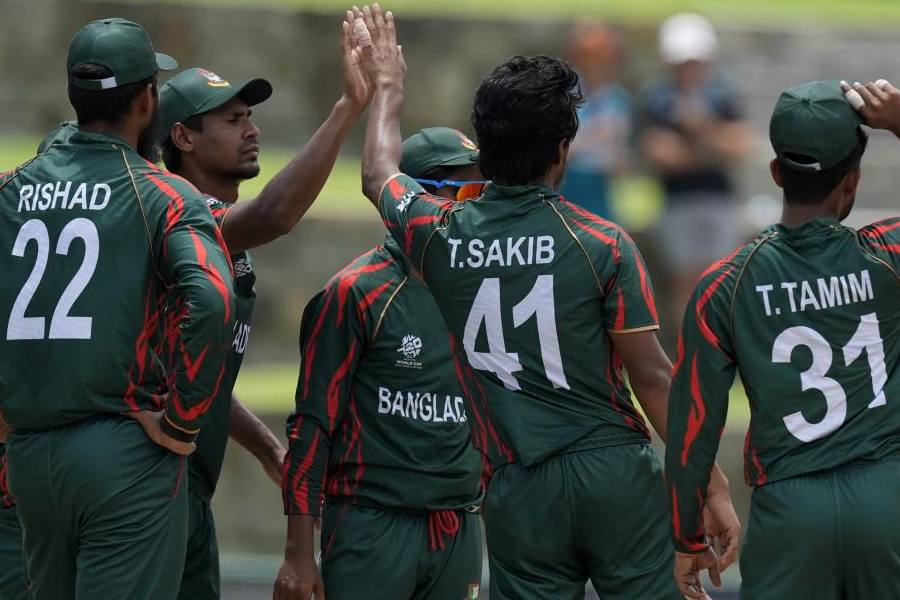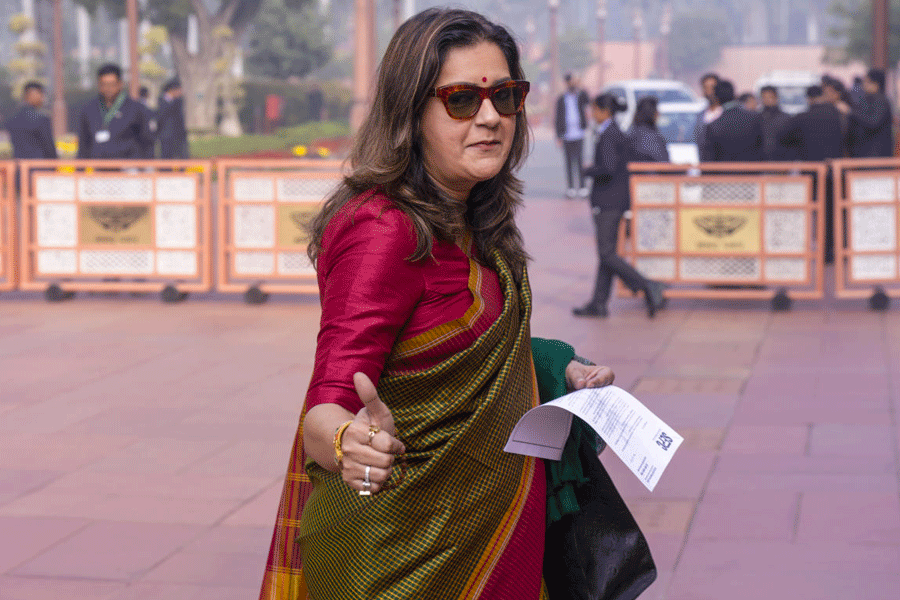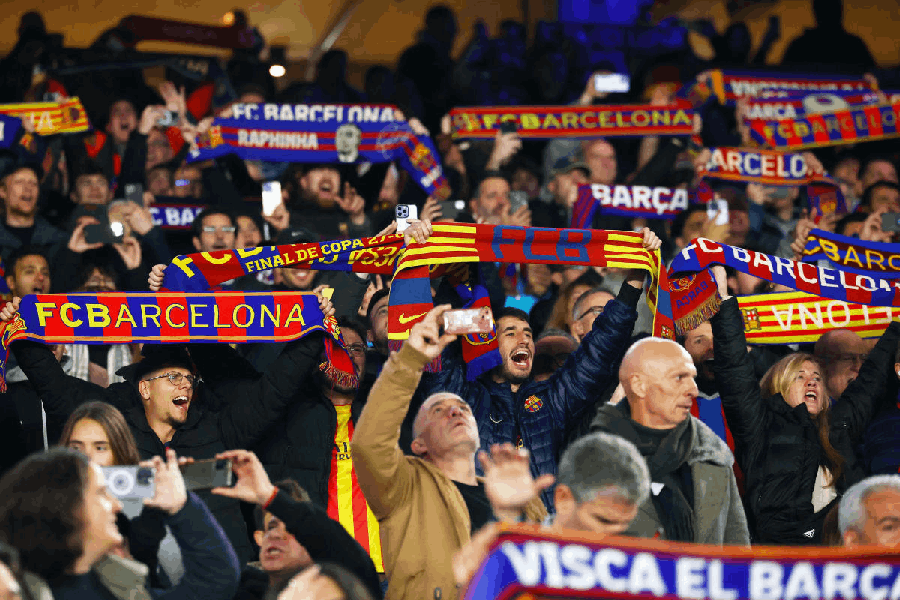1961 |
 |
| Birlalaya, the Kala Bhavana girls’ hostel built with the help of the Birlas 53 years ago |
1963 |
 |
| Goenkalaya, built for girl students with the help of the Goenkas 51 years ago. Pictures by Indrajit Roy |
Santiniketan, Feb. 16: The path that once took Rabindranath Tagore to maharajas has now taken Visva-Bharati to the two best-known business families in Calcutta.
Kala Bhavana, the arts section of the university that Tagore founded, has written to Sarala Birla, the wife of Birla family patriarch B.K. Birla, and Sanjiv Goenka, chairman of the RP-Sanjiv Goenka Group, for help to set up a museum and develop infrastructure for better upkeep and preservation.
The last time the central university had approached the two business families was more than 50 years ago. The Birlas and the Goenkas had obliged then, building two girls’ hostels that are named after the groups.
The latest requests, necessitated by a shortfall in additional central allocation, revive a contingency step that had been activated by Tagore more than 100 years ago.
Tagore had penned letters seeking financial assistance from maharajas to build Visva-Bharati and overcome many a crisis in its initial years.
This time, too, the appeal for help has been made through two letters to Sarala Birla and Goenka.
In the February 8 letters, Kala Bhavana principal Sisir Sahana said the arts wing did not have a museum to showcase to the public the 17,000-odd works by “eminent masters”. The works of art are now kept in the archives.
“Kala Bhavana has a very important museum which hosts more than 17,000 original art works by eminent masters of Indian art and Far East. We have original art works of Rabindranath Tagore, Nandalal Bose, Binod Behari Mukhopadhyay, Ramkinkar Beij, Abanindranath Tagore and many others. Due to lack of infrastructure to preserve the valuable archives, most of the art works are facing a threat of being damaged permanently,” the letters said.
“We also do not have an art museum in Kala Bhavana for permanent display of collected art works of international standard. Unfortunately, we do not get additional funding from the central government to undertake such developmental activities. Hence we seek your financial support to develop the existing infrastructure,” the letters added.
The principal reminded Sarala Birla and Goenka that the two families built the girls’ hostels — Birlalaya and Goenkalaya — for Visva-Bharati in the early 1960s. The foundation stones had been laid by then chancellor and Prime Minister Jawaharlal Nehru, the letters said.
Varsity officials said Visva-Bharati, now a central university running on government grants, had not sought private help in the intervening years since 1963.
Officials said Visva-Bharati had requested from the Centre a grant of Rs 150 crore in the 2012-13 financial year to improve infrastructure but received Rs 68 crore. “Had we received Rs 150 crore, there would not have been any immediate need to seek financial assistance,” a senior varsity official said.
Contacted today, Goenka said he would not like to comment on charity work done by the family. Sarala Birla could not be reached for comment.
Principal Sahana told The Telegraph: “We have sent proposals to two families of industrialists that had earlier helped us build two girls’ hostels. We also have plans to send letters to other industrialists seeking funds for other development projects of the university.”
Senior Visva-Bharati officials said Tagore had taken financial help from well-wishers to build and improve the infrastructure of the institution.
“Our founder, Gurudev, had taken help from outside to develop his beloved school in times of financial crisis. Now we are following in his footsteps to develop our infrastructure,” said Sushanta Dattagupta, the vice-chancellor of Visva-Bharati.
The varsity officials said Tagore had received financial help from the royal family of Tripura while Visva-Bharati was being set up.
In a letter to the maharaja of Tripura, Birendra Kishore Manikya, in 1910, Tagore had expressed his gratitude for the benevolence of the king’s late father. “Swargio maharajer nikat hoitey Bolpur vidyalaya je barshik sahajya labh kariya asiyachhe, taha aponar agochar nai. Sei badannyatai durdine ei vidyalayke raksha kariachhey (You know that the school in Bolpur had received yearly assistance from the late maharaja. The school was saved during times of crisis because of his benevolence).”
In another letter to the maharaja of Porbandar in 1928, Tagore had written: “I am glad to inform your highness that the Kala Bhavana building has been completed and the department has been removed there.”
Tagore had started the school, Brahmacharya Ashram, in 1901. Over the years, Tagore founded Sangeet Bhavana and Kala Bhavana. In 1921, Tagore named these institutions Visva-Bharati.











